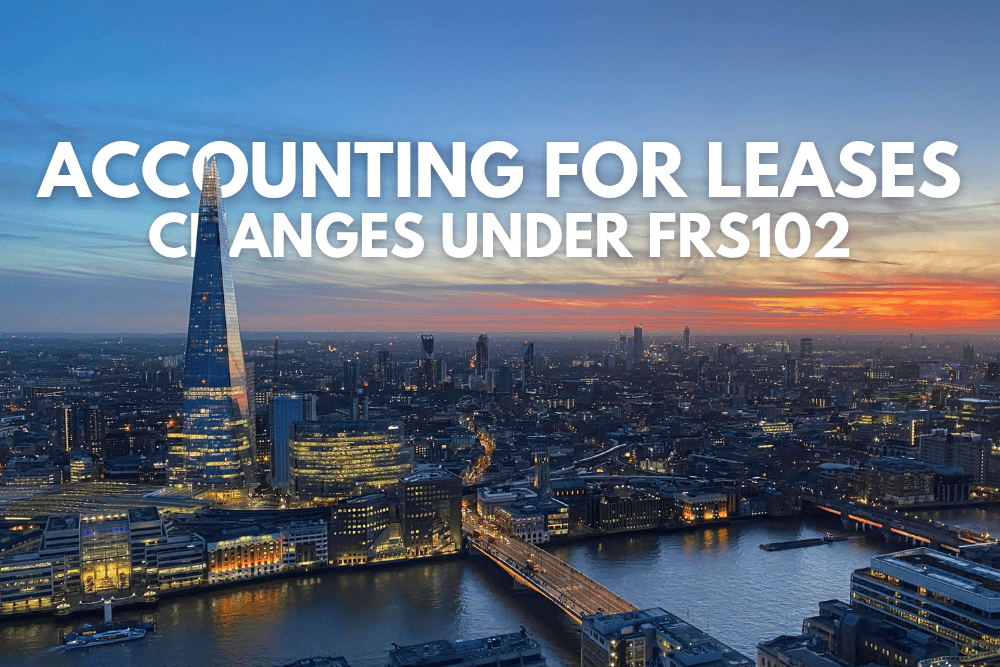
Accounting for Leases - Changes Under FRS102
The way in which companies should account for leases is changing soon. These changes could impact how your business records lease contracts - even if you simply rent an office space or a company vehicle.
This article explains the upcoming changes, what they mean in practice, and how your business can prepare.
What’s changing?
Historically, under FRS 102:
- Finance leases were recognised on the balance sheet, with an asset, depreciation, a lease liability and finance costs.
- Operating leases were not – instead, lease payments were simply recorded as an expense.
With the revision to FRS 102 Section 20 (effective for accounting periods beginning on or after 1 January 2026), this distinction disappears. From 2026, nearly all leases will require companies to recognise a “right-of-use asset” and a lease liability on the balance sheet, regardless of whether they were previously classified as operating or finance leases. The reporting standards will be more aligned with IFRS and differentiating between an operating or finance lease will be a thing of the past.
In practice, this means more companies will show higher assets and higher liabilities, which could affect key figures such as EBITDA, gearing ratios, and bank covenants.
Key Changes to FRS 102 Lease Accounting Standards
Key Changes at a Glance
- Balance Sheet Recognition: All leases (except for short-term or low-value leases) must be recognised as an asset and liability.
- Exemptions:
- Short-term leases (12 months or less).
- Low-value assets (e.g., laptops, mobile phones, small office furniture).
Examples that won’t qualify as “low-value”: cars, vans, land and buildings, boats, aircraft, tractors.
- Finance leases: No major change – existing balances continue.
- Operating leases: Now recognised as a right-of-use asset and liability, with lease payments discounted to present value.
Tip: “Low value” is not just about the price – it must be an asset that can be used independently and provides benefit on its own.
Transition & Implementation
- Modified Retrospective Approach: Companies do not restate comparative information in the accounts when applying the changes. Differences are adjusted against opening reserves in the year of adoption.
- Finance leases: Continue as before – little impact at transition. Companies should continue to recognise the carrying value of the asset and lease liability under the previous rules. Therefore, there shouldn’t be a change to the balance sheet amounts on initial application
- Operating leases: Require more work. Companies must calculate the present value of future lease payments and record this on the balance sheet.
This will involve judgment, calculations, and potentially the support of an accountant to ensure compliance.
Who Will Be Affected?
These changes won’t only affect large corporations with extensive lease portfolios. Any business that leases property, vehicles, or equipment will likely be impacted. While manufacturers with leased machinery and transport companies with vehicle fleets will see the most noticeable changes, professional service firms should also pay close attention. Even something as simple as a leased office space or a single company car will bring new reporting requirements. In short, if your business leases assets of any kind, it’s worth reviewing how these updates will affect your balance sheet and financial disclosures.
What Should Businesses Do Now?
- Review all current lease agreements.
- Assess whether any qualify for the exemptions.
- Consider how the new standard will affect reported results, KPIs, covenants and performance metrics.
- Plan for the transition before 2026 to avoid surprises.
We recommend modelling the impact now so you can discuss changes with stakeholders, lenders, or investors well in advance. Early preparation will help you plan for any adjustments and avoid last-minute surprises when the standard takes effect.
How We Can Help
We’re already working with clients across a range of sectors to help them prepare for the new lease accounting requirements under FRS 102. Our team can review your lease agreements, calculate the present value of future lease liabilities, and assess the impact on your financial statements and performance metrics. We can also guide you through the transition process, ensuring that your reporting remains compliant and transparent.
If you’d like tailored support or have questions about how the new rules apply to your business, please get in touch. Preparing now will help you manage the changes smoothly and confidently ahead of 2026.
Author, Nathan Chantry - Audit
Nathan.Chantry@ArnoldHill.co.uk

